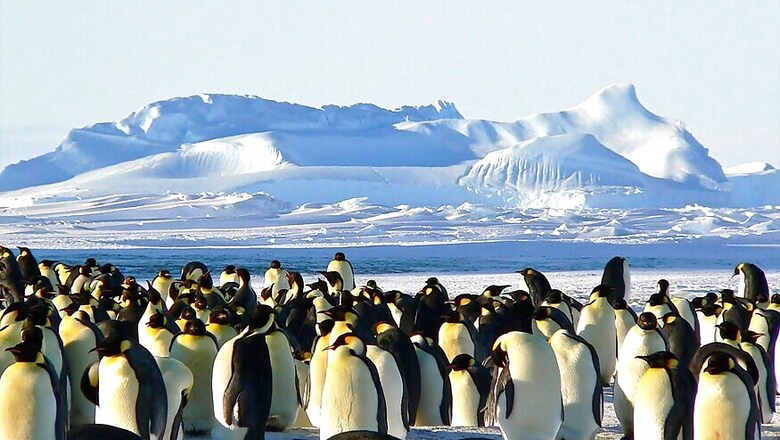
views
Washington: Scientists have discovered a previously unknown "supercolony" of more than 1,500,000 Adelie Penguins in the Danger Islands, a chain of remote, rocky islands off of the Antarctic Peninsula's northern tip.
For the past 40 years, the total number of Adelie Penguins, one of the most common on the Antarctic Peninsula, has been steadily declining - or so biologists have thought.
The study led by researchers from the Woods Hole Oceanographic Institution (WHOI) in the US, provides new insights on of this species of penguin.
"Until recently, the Danger Islands weren't known to be an important penguin habitat," said Heather Lynch, associate professor at Stony Brook University in the US.
These supercolonies have gone undetected for decades, partly because of the remoteness of the islands themselves, and partly the treacherous waters that surround them.
Even in the austral summer, the nearby ocean is filled with thick sea ice, making it extremely difficult to access.
Yet in 2014, Lynch and colleague Mathew Schwaller from NASA discovered telltale guano stains in existing NASA satellite imagery of the islands, hinting at a mysteriously large number of penguins.
Researchers arranged an expedition to the islands with the goal of counting the birds firsthand.
When the group arrived in December 2015, they found hundreds of thousands of birds nesting in the rocky soil, and immediately started to tally up their numbers by hand.
The team also used a modified commercial quadcopter drone to take images of the entire island from above.
"The drone lets you fly in a grid over the island, taking pictures once per second. You can then stitch them together into a huge collage that shows the entire landmass in 2D and 3D," said Hanumant Singh, professor at Northeastern University, who developed the drone's imaging and navigation system
Once those massive images are available, the team can use neural network software to analyse them, pixel by pixel, searching for penguin nests autonomously.
"Not only do the Danger Islands hold the largest population of Adelie penguins on the Antarctic Peninsula, they also appear to have not suffered the population declines found along the western side of Antarctic Peninsula that are associated with recent climate change," said Michael Polito, from Louisiana State University in the US.


















Comments
0 comment